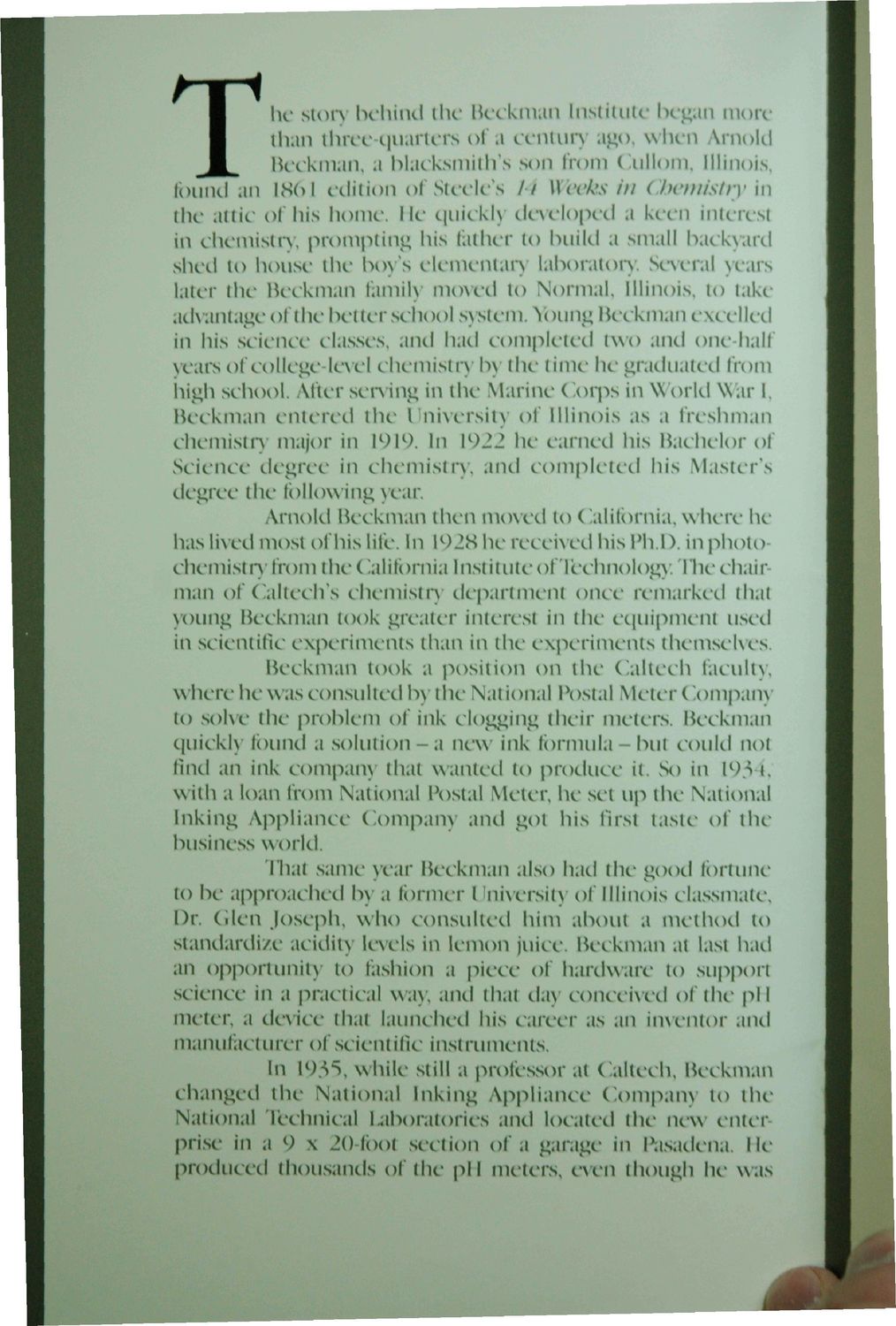| |
| |
Caption: Dedication - Beckman Institute
This is a reduced-resolution page image for fast online browsing.

EXTRACTED TEXT FROM PAGE:
he story behind the Beckman Institute began more than three-quarters of a century ago, when Arnold M Beckman, a blacksmith's son from Cullom, Illinois, found an 1861 edition of Steele's 14 Weeks in Chetnistry in the attic of his home. He quickly developed a keen interest in chemistry, prompting his father to build a small backyard shed to house the boy's elementary laboratory. Several years later die Beckman family moved to Normal, Illinois, to take advantage of the better school system. Young Beckman excelled in his science classes, and had completed two and one-half years of college-level chemistry by the time he graduated from high school. After serving in the Marine Corps in World War I, Beckman entered the University of Illinois as a freshman chemistry major in 1919. In 1922 he earned his Bachelor of Science degree in chemistry, and completed his Master's degree thefollowingye;ir. Arnold Beckman then moved to California, where he has lived most of his life. In 1928 he received his Ph.D. in photochemistry from the California Institute of Tbchnology. The chairman of Caltech's chemistry department once remarked that young Beckman took greater interest in the equipment used in scientific experiments than in the experiments themselves. Beckman took a position on the Caltech faculty, where he was consulted by the National Postal Meter Company to solve the problem of ink clogging their meters. Beckman quickly found a solution - a new inkformula- but could not find an ink company that wanted to produce it. So in 193**, with a loanfromNational Postal Meter, he set up the National Inking Appliance Company and got his first taste of the business world. That same year Beckman also had the good fortune to be approached by aformerUniversity of Illinois classmate, Dr. Glen Joseph, who consulted him about a method to standardize acidity levels in lemon juice. Beckman at last had an opportunity to fashion a piece of hardware to support science in a practical way, and that day conceived of the pH meter, a device that launched his career as an inventor and manufacturer of scientific instruments. In 193*5, while still a professor at Caltech, Beckman changed the National Inking Appliance Company to the National Technical Laboratories and located the new enterprise in a 9 x 20-foot section of a garage in Pasadena. He produced thousands of the pH meters, even though he was
| |